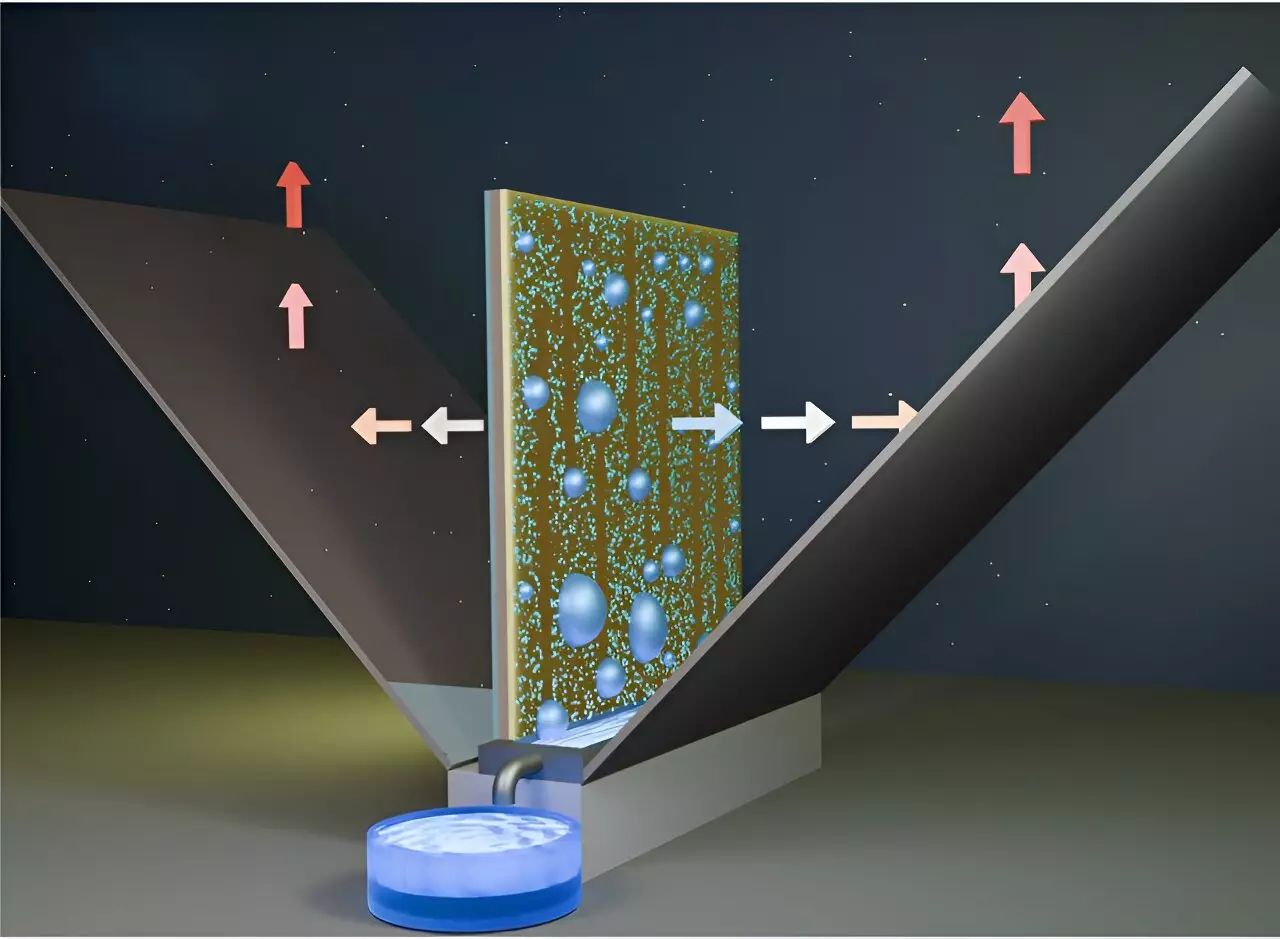Saudi Arabia stands on the cusp of a transformative shift in its energy paradigm, fueled largely by its vast natural resources and strategic investments in solar energy technology. With sunny skies dominating the climate, solar energy contributes to a staggering 80% of the nation’s green energy portfolio. However, amidst this success comes a unique challenge: the issue of overheating solar cells, which necessitates effective cooling mechanisms for optimal performance. Traditional cooling solutions often rely on electricity, posing a dilemma in areas where electrical infrastructure is limited or costly.
To address the dual challenge of cooling solar technology while also securing a water source in arid environments, an innovative approach has emerged from a collaboration led by KAUST Professor Qiaoqiang Gan. This international research team has engineered a novel device that eliminates the need for electrical power entirely. Instead, it ingeniously captures water vapor from the air, relying solely on gravity, which not only aids in cooling the solar cells but also provides water for various non-potable applications, including irrigation and building maintenance.
The significance of this development cannot be overstated. Scientists estimate that the atmosphere holds six times more water than all freshwater rivers combined, meaning there is ample potential water to be harvested. Despite existing atmospheric water harvesting technologies, they often require electricity to function effectively, which hampers their implementation in rural Saudi regions. Gan’s device presents a solution that could redefine water collection and solar energy efficiency in such locales.
One of the primary hurdles in atmospheric water harvesting technology is the adhesion of water droplets to the device surface, which can severely limit the amount that can be collected. The research team, including Professor Dan Daniel and postdoc Shakeel Ahmad, tackled this issue head-on. They discovered that a specialized lubricant coating, composed of a commercial polymer and silicon oil, significantly improved water collection rates by minimizing droplet adhesion. Ahmad characterized the innovation, stating, “Our coating effectively eliminated pinning, enabling true passive water collection driven by gravity.”
This advancement not only enhances the efficiency of water harvesting systems but also aligns perfectly with the passive cooling methods that Gan’s team sought to optimize. Given the operational design of their device—termed “vertical double-sided architecture”—it originally aimed to reflect thermal heat to cool solar cells, yet it has found a profound new purpose in moisture collection.
Rigorous field testing in the Thuwal region, located about 100 km north of Jeddah, has revealed promising results. Over a year, the device reportedly doubled the rate of water collection compared to existing technologies. This performance brings forth a new era for solar energy in arid landscapes, allowing solar cells to operate more efficiently and sustainably. The implications of scaling this technology could extend far beyond energy savings and increased efficiency.
Given that the system operates without any mechanical components—like compressors or fans—it significantly reduces maintenance costs, presenting further economic advantages over traditional systems. As Daniel emphasized, the electricity-free operation leads to substantial energy savings, making it an attractive option for widespread adoption.
Saudi Arabia’s journey towards becoming a leading renewable energy exporter receives a boost from this innovative research into passive atmospheric water harvesting technology. By simultaneously manipulating natural resources and addressing energy inefficiency, this pioneering device exemplifies the synergy of solar energy and water harvesting solutions in overcoming environmental challenges. It marks a critical step forward, offering hope that such advancements can help the Kingdom transform its energy infrastructure while also supporting sustainable water management practices—a vital goal in arid regions worldwide.


Leave a Reply
You must be logged in to post a comment.